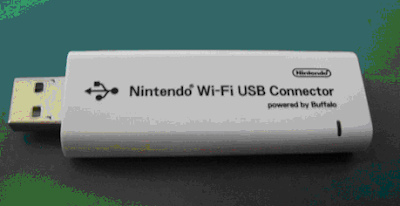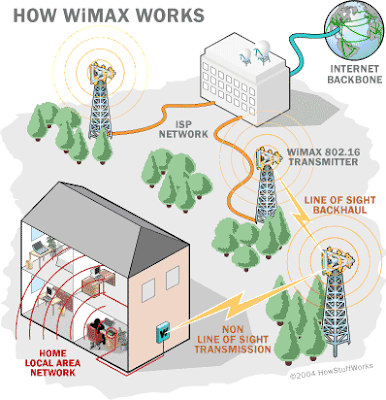articles 1,2

WIRELESS TECHNOLOGY WITH BOOMING
Increasing demands of the software industries, rapidly growing needs-bundled with information sharing and data transmission had been the greatest challenge for the network researchers. One of the most daunting projects for a broadband user with no networking experience is switching from a single computer connected to a cable or DSL modem to a wireless network. uses radio waves, just like cell phones, televisions and radios do. In fact, communication across a wireless network is a lot like two-way radio communication. Here's what happens:
- A computer's wireless adapter translates data (1s & 0s) into a radio signal and transmits it using an antenna.
- A wireless router receives the signal and decodes it. It sends the information to the Internet using a physical, wired Ethernet connection. The process also works in reverse, with the router receiving information from the Internet, translating it into a radio signal and sending it to the computer's wireless adapter.



1: Wi-fi uses antennas around which wi-fi "hotspots" are created. The hotspots are outlets equipped to receive the radio waves that power wireless networking. Until recently, wi-fi has been confined to more than 10,000 hot-spots in cafes, bars and airport lounges. But various projects are under way to set up city-wide zones, where a series of antennas are installed in the streets, on lampposts or street signs. The hotspots around them together create a much wider area of coverage. It uses a mesh network which links each lamppost antenna to the next creating a seamless wi-fi
hotspot around the center of the city. The Mesh Network in itself has a capability of self healing at the time of system faults.
2: The source internet connection is provided by a PC or server to which the antennas are connected either wirelessly (Using dongle) or via a cable.
WiFi routers broadcast radio signals in all directions (picture a pumpkin-shaped broadcast range surrounding the transmitting antenna).They have taken wireless LAN solutions to a new level, creating technologies that give users access to the most abundant and constant wireless networks the industry has ever seen.

3: Some mobile phones and Personal Digital Assistants (PDA) now have wi-fi chips installed. With mobile phones, this means conventional networks can be bypassed and inexpensive long-distance calls made over the web (using Voice over Internet Protocol, VOIP).
4: Many laptops and handheld computers now come with built-in wi-ficonnectivity . It is also possible to add wi-fi to your computer with a special card that plugs into a port on your laptop or palmtop. The Wi-Fi Card maintained a strong signal up to 100 feet away from the access point. This simple thumb drive-sized device plugs into any USB port of your PC.
Wi-Fi USB DONGLE
RF radiation, it is not clear if radio waves from wi-fi or wi-max can cause health problems. What is known is that microwaves at a particular frequency cause molecules to rotate and heat -up called Rayleigh effect. This is how microwave ovens work. WI-FI & WI-MAX operate at Microwave frequencies, typically 2 - 10 GHz. But these frequency ranges are not resonant and will not induce Rayleigh effect. The power output is also far too low. Basically we are surrounded by radio waves through the spectrum; wi-fi / wimax are simply in the microwave portion. There is no proof that they are harmful.
What is WIMAX ?
WiMAX is short for Worldwide Interoperability for Microwave Access. WiMAX is a wireless digital communications system, also known as IEEE 802.16, that is intended for wireless "metropolitan area networks". WiMAX can provide broadband wireless access (BWA) up to 30 miles (50 km) for fixed stations, and 3 - 10 miles (5 - 15 km) for mobile stations.
In contrast, the WiFi/802.11 wireless local area network WiMAX transmitting tower standard is limited in most cases to
only 100 - 300 feet (30 - 100m). In practical terms, WiMAX would operate similar to WiFi but at higher speeds, over greater distances and for a greater number of users. WiMAX could potentially erase the suburban and rural blackout areas that currently have no broadband Internet access because phone and cable companies have not yet run the necessary wires to those remote locations.
HOW DOES WiMAX WORK ?
A WiMAX system consists of two parts:
A WiMAX tower, similar in concept to a cell-phone tower - A single WiMAX tower can provide coverage to a very large area -- as big as 3,000 square miles (~8,000 square km).
A WiMAX receiver - The receiver and antenna could be a small box or PCMCIA card, or they could be built into a laptop the way WiFi access is today.
A WiMAX tower station can connect directly to the Internet using a high-bandwidth, wired connection (for example, a T3 line). It can also connect to another WiMAX tower using a line-of-sight, microwave link. This connection to a second tower (often referred to as a backhaul), along with the ability of a single tower to cover up to 3,000 square miles, is what allows WiMAX to provide coverage to remote rural areas.
What this points out is that WiMAX actually can provide two forms of wireless service:

There is the non-line-of-sight,WiFi sort of service, where a small antenna on your computer connects to the tower. In this mode, WiMAX uses a lower frequency range -- 2 GHz to 11 GHz (similar to WiFi). Lower-wavelength transmissions are not as easily disrupted by physical obstructions -- they are better able to diffract, or bend, around obstacles.
There is line-of-sight service, where a fixed dish antenna points straight at the WiMAX tower from a rooftop or pole. The line-of-sight connection is stronger and more stable, so it's able to send a lot of data with fewer errors. Line-of-sight transmissions use higher frequencies, with ranges reaching a possible 66 GHz. At higher frequencies, there is less interference and lots more bandwidth.
Wi-Fi vs. WiMax
Comparing WiMax to WiFi is akin to comparing apples to oranges. Initially it’s easy to see why the comparison would exist, as most people think WiMax is merely a more robust version of WiFi. Indeed they are both wireless broadband technologies, but they differ in the technical execution and ultimately their business case is very different.
The Technical Controversies Table:-
| SPECIFICATION | Wi-Fi | WiMAX |
| Frequency rates | 2.4GHZ or 5.8GHZ | 2GHZ - 66GHZ |
| Maximum Throughput | 2MPBS - 54 MPBS | 70 MPBS |
| Range | 200 yards | Up to 10 miles |
| Transport protocol | Ethernet | TCP, IP, ATM |
| Equipment costs | Few hundred dollars | Several thousand dollars |
In addition to the technical differences that exist, the marketplace difference is that equipment is more or less non-existent for WiMax and certainly not geared towards a residential environment with very high pricing to be expected. It will take at least 2 years to see equipment of mass market uptake pricing. WiMax was not commercially available until the second half of 2005, and even then at a very controlled level due to standardization issues. In fact, at the eve of 2006 a robust production and implementation happened due to the ramp-up period for manufacturers. This is certainly one challenge to the widespread adoption of WiMax. Additionally, WiMax will have issues of pricing, and remained far more expensive than WiFi. WiMax will be primarily adopted by businesses to replace or displace DSL, and offices that want to cover a lot of territory without entering the world of endless repeaters that are necessary with the 802.11 technologies. It will take some time (2 years) for WiMax to significantly reduce its price-point for residential uptake. WiMax will not displace WiFi in the home because WiFi is advancing in terms of speed and technology. Each year brings a new variant to the 802.11 area with various improvements.
Additionally, for commercial deployment, frequency allocation will be an issue. With the three dominant communications players controlling the best frequencies, it will be hard to get the type of traction needed with the remaining companies operating in the frequencies available. WiMax will become extremely robust and displace WiFi as the deployment of choice for commercial deployments. Based upon the number of public hotspots already deployed, WiMax will not be chosen to replace those as they are up and running adequately and personnel involved understand how to work with the technology. The business case does not exist at the hotspot level. Where it may exist is for wider free use deployments such as city deployments (free ones) and other government sponsored or carrier sponsored (with ultra inexpensive pricing for consumers) deployments. If this happens then its not only WiFi that will be displaced, but cable and DSL will also lose a percentage of their subscriber base. What will cause the displacement is the consumer’s proven desire for a bundled package? The real question is: Will WiMAX one day be the standard for wireless? Or will it stay only for wireless Internet providers? You be the judge !
CONTRIBUTED BY: Snigdhadeb Jana(III BCA)
SPEAKING OF MATHEMATICS
Mathematics is an unusual language. In ordinary languages speech is primary, and the written form is a later addition, devised as a way of recording what is said. Hence there is a reasonably direct, one-to-one mapping between written and spoken language. Of particular importance, both forms are one dimensional, at least in their surface structure. One word follows another in a definite sequence. When reading aloud from a written text, you need to know the meaning of what makes text-to-speech system possible, if a computer had to understand a sentence before if could read it out aloud, the listener would have a long wait.
Mathematics is different. Mathematics is first of all a written language, with a few speech conventions imposed on it after the fact. When mathematicians talk stop they do at the blackboard; in the more formal setting. Perhaps the clearest sign the mathematical notation evolved initially as a system of writing rather than speaking it reliance on the two-dimensions of the written page. Superscripts and Subscripts, cite a commonplace example, derives their meaning from their position above or below the base line, a concept the has immediate oral counterpart. And it would be hard to imagine anything more patently two-dimensional than the notation for a matrix. Thus, if ordinary language is linear, then mathematical writing is planar.
CONTRIBUTED BY: KARMA JIGME DURSI (IIIBCA)
SOURCE:MATHEMATICS TODAY,OCT 2002



Comments